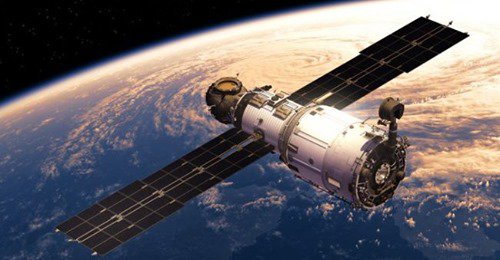“It’s not only Canada’s problem or another country’s problem, space belongs to everybody.”

On October 6, 1957, Russia’s Sputnik 1 made history as man’s first satellite to reach into space. Today, an estimated 6,000 satellites are making the rounds in Earth’s lower orbit, along what has become a busy satellite superhighway.
Private industry is driving a space boom. Over the next several years, companies like Amazon and SpaceX plan to launch tens of thousands of satellites.
Canada, too, is investing more money in their own space fleet, and even some upcoming trips to the moon. In total, $9.9 million was included in last week’s federal budget for the Canadian Space Agency to start planning for the next generation of observational satellites.
That project is expected to replace the Radarsat Constellation Mission; three satellites worth over a billion dollars. Together, they track things like climate change, ice movements, precision agriculture, animal migration, natural disasters, and more. But they and others are facing an increasing threat.
On February 10, 2009, two communications satellites—the active commercial Iridium 33 and derelict Russian military Kosmos-2251—accidentally collided above Siberia. The impact released an estimated 3,500 pieces of debris into orbit. Add that to a satellite count expected to multiply to over 30,000 in the next decade and space is getting dangerously overcrowded.
“Back in the early days, there were not that many alerts,” said Michel Doyon, the manager of flight operation at the Canadian Space Agency.
The CSA currently supports over 70 satellites. Last year, it manually processed over 18,000 alerts for possible collisions.
“When the secondary object is pure debris, then there is no coordination. We will manage it. But if the other object is another satellite, then operators will work together to make sure that we don’t move in the same direction -that one goes up, one goes down, and so on.”
It’s an onerous job and one that space tech companies are eager to help manage.
Kayhan Space is one of them, offering advanced new systems to monitor and automate collision alerts – something of a traffic control service for Earth’s lower orbit.
“It takes one catastrophic accident, one collision, not only to end that mission, but also debris from that collision can make the entire orbit unusable for many, many years. So it’s a big problem. And it’s very prone to human error,” the company’s cofounder Araz Feyzi said.
Others, like Canada’s MDA, are launching new technology to assist from above.
“Using on-orbit servicing, to actively manage, inspect, repair, and refuel and extend the life of satellites, in addition to managing debris, and dealing with space junk – there’s a growing market for that, estimated in the $8 billion range,” MDA CEO Mike Greenley said.
“There will be opportunities in the future to put sensors on spacecraft to be able to see objects coming towards you, and have that programmed into the logic.”
And while technology can help, even tech companies recognize it’s a growing issue that will require extensive international cooperation in an increasingly chaotic atmosphere.
“This problem is really a large problem,” said Dr. Siamak Hesar, an aerospace engineer who previously supported multiple NASA missions before co-founding Kayhan Space. “It’s not only Canada’s problem or another country’s problem, space belongs to everybody.”
“We believe that there’s a need for global collaboration on setting ground rules for space, traffic management,” added Feyzi.
Canada has been an active player in various international forums to address the issue. The most recent one was approval of the long-term sustainability guidelines by the United Nations General Assembly, where more than 80 nations agreed on guidelines for ways to responsibly use space.globalnews







